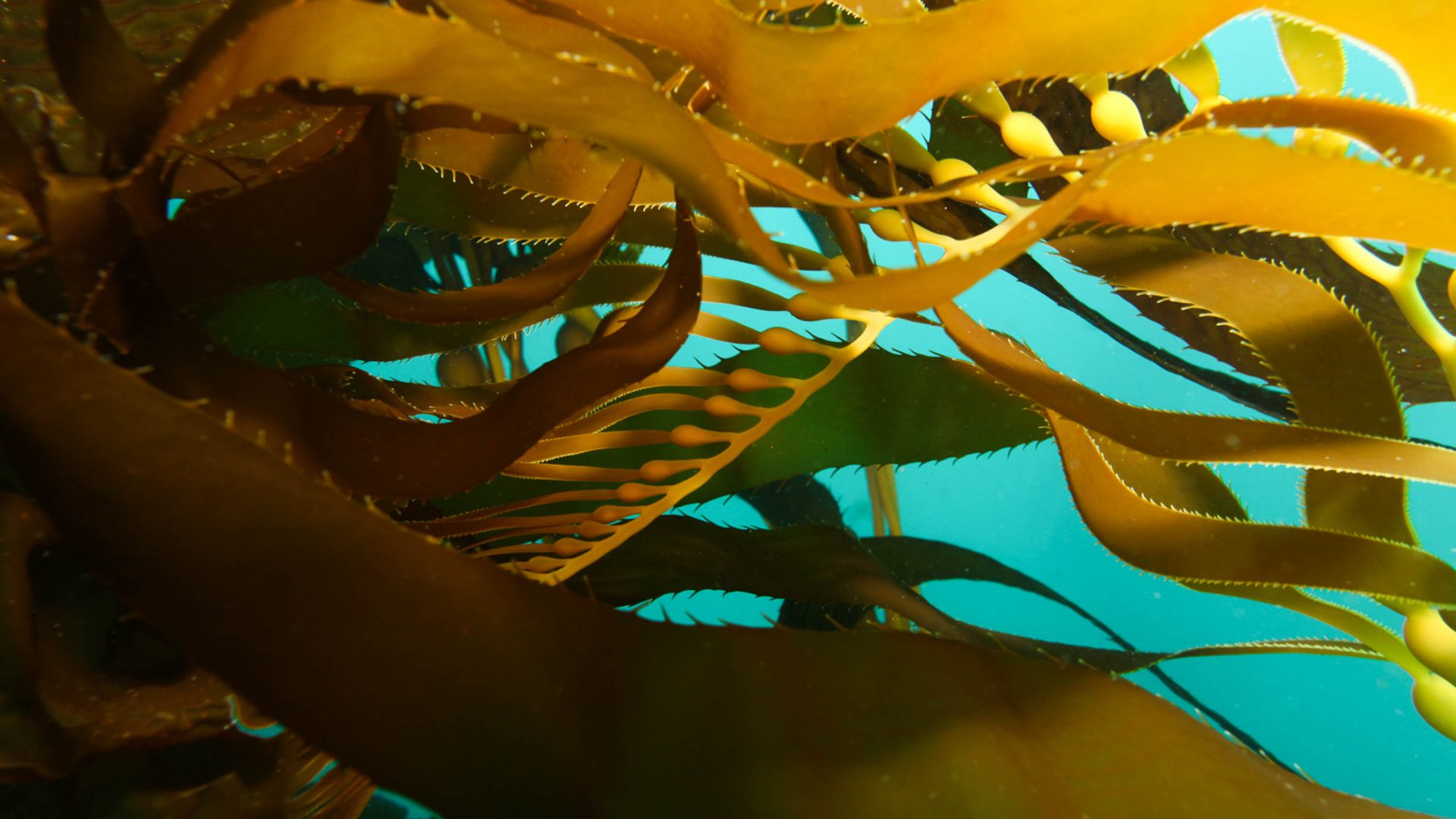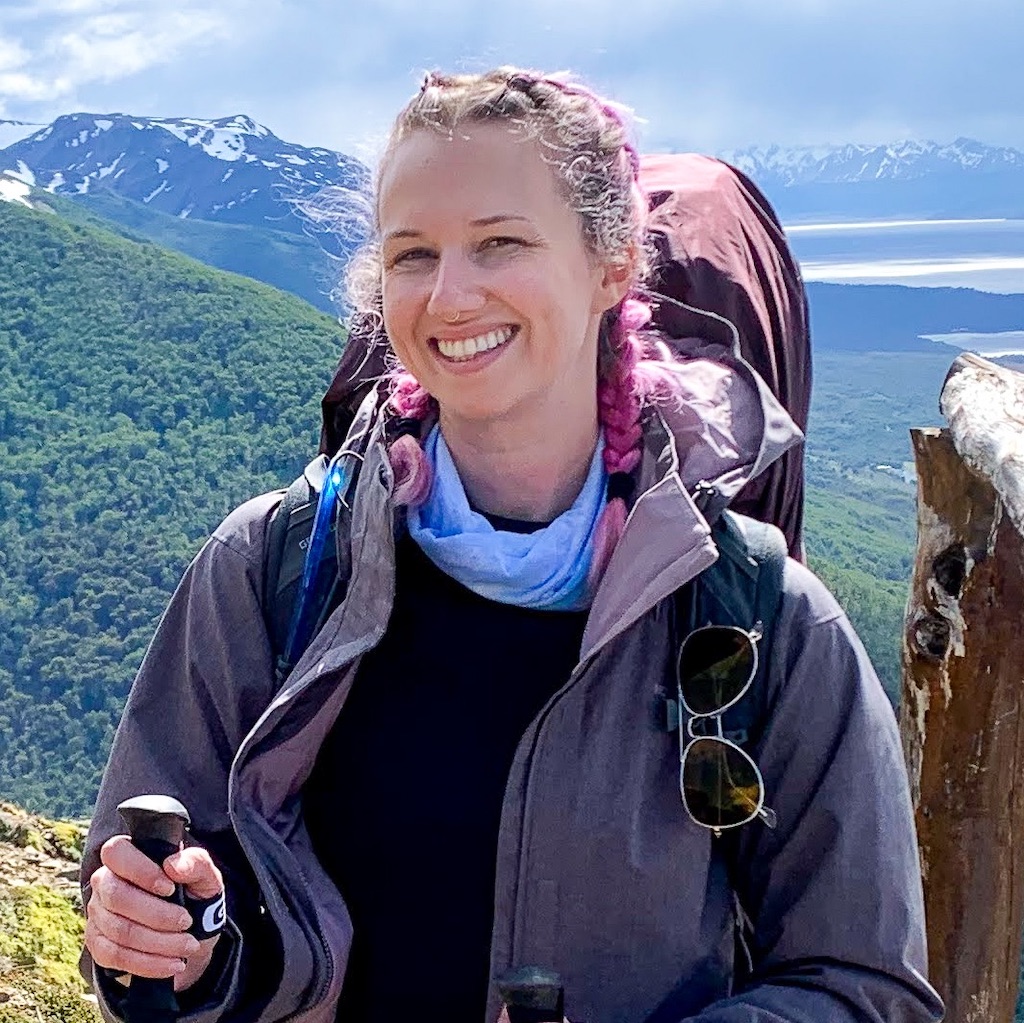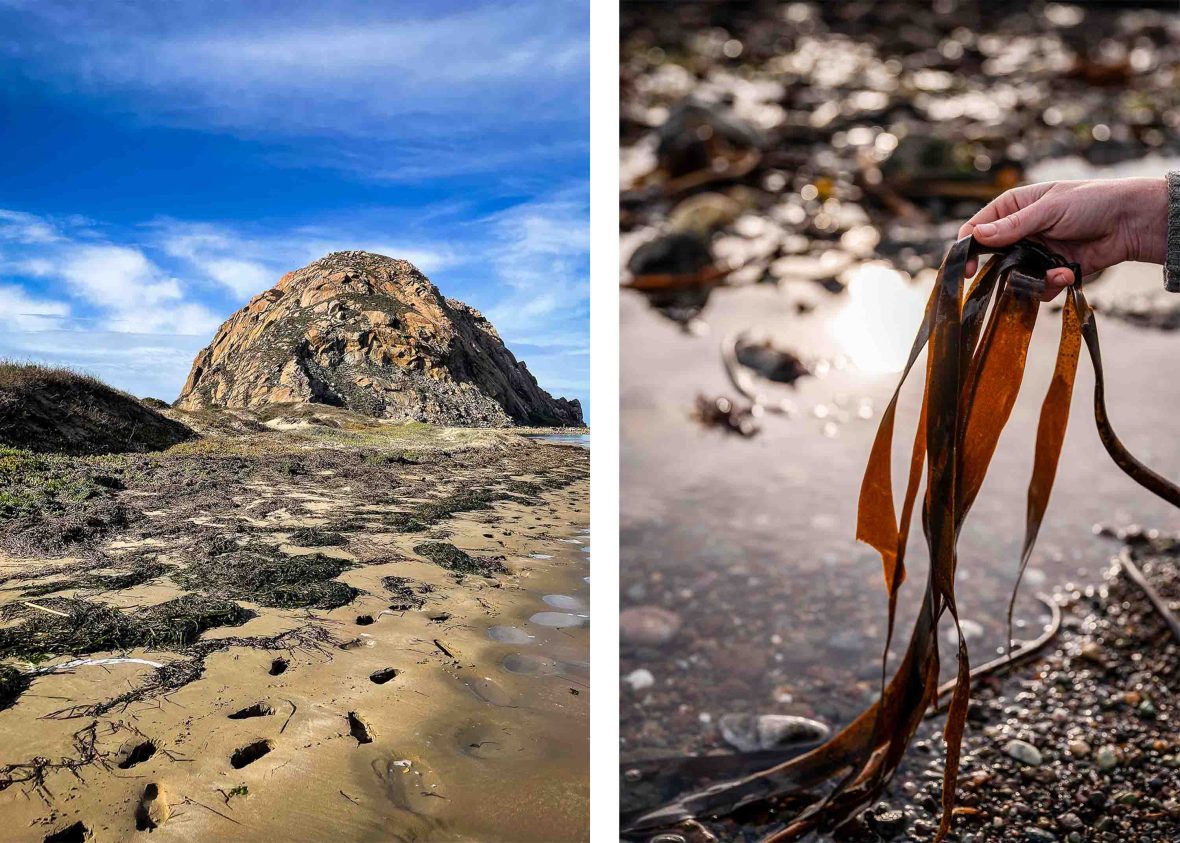
Activists in California are developing a ‘blue economy’ made possible by the surprisingly versatile qualities of kelp (seaweeds). Writer Bailey Freeman dives into how this humble algae can develop sustainable foodways and travel experiences.


Activists in California are developing a ‘blue economy’ made possible by the surprisingly versatile qualities of kelp (seaweeds). Writer Bailey Freeman dives into how this humble algae can develop sustainable foodways and travel experiences.
I pick through the shimmering tide pools of Estero Bluffs State Park, marveling at the aquamarine anemones and opalescent sea snails. My guide—Melissa Hanson, co-founder and CEO of Kelpful, a small, woman-owned kelp foraging cooperative headquartered in San Luis Obispo—gracefully hops from rock to rock, pointing out clusters of brown, green and red kelps and seaweeds strewn across the shore, almost all edible varieties that her business teaches folks to forage. At our feet is an embarrassment of riches that often escapes the untrained eye.
Seaweed and kelp are the unsung heroes of the California coast, supporting millions of marine species—and us. As the world faces unprecedented environmental challenges, a healthy blue economy just might be our savior. The term “blue economy” refers to marine-based economic systems that cultivate symbiotic relationships between conservation and industry. These initiatives create revenue and protect the environment at the same time. And Hanson believes that kelp—and lots of it—lies at the heart of a healthy blue economy’s future in the US.

California’s 840-mile-long coast is home to a variety of ecosystems ranging from dramatic undersea forests of giant and bull kelp to shallows filled with smaller, oft-harvested seaweed species like nori, kombu and sea lettuce.
Unlike on the East Coast—which is protected by rocky inlets and coves—much of California’s coast lies exposed. The powerful California current pairs with the springtime upwelling of nutrient- and oxygen-rich water to feed an explosion of plant and animal life that sustains much of the Pacific. The state’s kelp forests slow this current, creating protective nurseries for fish and other sea creatures and improving water and air quality by storing staggering amounts of carbon. According to Mongabay, scientists estimate that the world’s kelp forests store anywhere from 61 to 268 teragrams of carbon per year (or 61 to 268 megatonnes).
Perhaps the biggest piece of California’s blue economy pie belongs to tourism—healthy ecosystems mean more tourism potential and more money for local small businesses and public programs.
Unfortunately—but perhaps not unexpectedly—California’s kelp forests are under significant threat due to climate change and industrial pollution. Kelp needs cold water to grow, so rising ocean temperatures jeopardize the future of the region’s aquatic forests. Additionally, an overpopulation of purple sea urchins is causing major problems by consuming the kelp faster than it can replace itself. Oil and gas industries, military activity in coastal waters, and agricultural runoff all also contribute to the degradation of kelp health. Researchers report major declines across the board, with areas like Mendocino and Sonoma Counties seeing a whopping 90 percent reduction in their kelp canopy.
This kind of loss is dire for the Pacific. Kelp is considered a “foundation species” and California’s coasts are in serious trouble without it. That’s why organizations across the country are working together to protect California’s kelp in a myriad of ways. Cal Poly’s Humboldt Marine Lab conducts aquaculture research in the kelp farm they’ve seeded in the waters of Humboldt Bay. Not only has this farm restored water health, but it has also created a thriving network of social and economic initiatives.
“Right now we are donating our harvests, giving away as much as possible, to establish a market,” says Dr. Rafael Cuevas Uribe, the marine lab’s aquaculture specialist. “That way, future farmers can come in and there’s already a demand.” The lab’s current ‘clients’ include the Food Sovereignty Lab at Cal Poly Humboldt (an initiative that works with local Indigenous nations to center Native-led environmental engagement), nearby restaurants, dairy farmers and organic fertilizer makers, to name a few.
But perhaps the biggest piece of California’s blue economy pie belongs to tourism—healthy ecosystems mean more tourism potential and more money for local small businesses and public programs. “A big reason we protect this area is for sheer recreational benefit,” says Lisa Uttal, officer of communications and outreach at Monterey Bay National Marine Sanctuary. “There’s incredible scuba diving here, incredible kayaking. And in terms of sustainable recreation, we look at it through the eyes of responsible wildlife viewing.”
Uttal oversees two programs—Baynet and Team Ocean—designed to keep Monterey Bay healthy and wild. These shoreline naturalist volunteer programs educate the public about the ecosystem they’re interacting with as they experience it: Volunteers are often found bobbing across the bay in kayaks, ready to educate those exploring the waters.
“The ocean is our heritage and who we are as people, and the ocean was like our roadway. If we had to travel somewhere, the ocean was what’s going to take us there.”
- Haylee Bautista
Haylee Bautista, Ocean Advocate for the yak titʸu titʸu yak tiłhini (ytt) tribe, works with a similar organization in Morro Bay called the SeaLife Stewards. “We call ourselves floating kiosks of information,” she laughs. “People can talk to us about whatever if they want to know more about—the birds, the eelgrass, the high-low tide, the watershed, our Native tribe.”
Similarly, Hanson of Kelpful recognizes the role her business plays in introducing locals and travelers alike to the issues the ocean faces—and how they can help. “Something really shifts in people when they get their food from the wild spaces where they live,” says Hanson. “It’s much more obvious how sensitive ecosystems are and how finite our resources are. It’s easier for people to feel like they are part of the ecosystem instead of separate from it.”

The central California coastline has a lengthy historic and cultural history for the Chumash Nation, which consists of several tribal bands throughout the area. “The Channel Islands are significant as the islands of origin for most of the Chumash people, and many Chumash people consider Point Conception the ascension point to heaven,” says Sam Cohen, the Government Affairs and Legal Officer of the Santa Ynez Band of Chumash Indians. “That entire coastline all the way to Morro Rock has a variety of sacred sites, and Morro Rock itself is considered sacred both to the Chumash people and to the Salinan people.”
Colonization brought centuries of violence and displacement—not to mention ecological devastation—but today local Indigenous groups are reclaiming their ancestral lands and encouraging the public to adopt a more environmentally and culturally sustainable mindset for living along the coast.
In addition to her role with the SeaLife Stewards, Bautista heads up several community education programs about the yak titʸu titʸu yak tiłhini culture and its connection to the marine world, past and present. “[The ocean] is our heritage and who we are as people, and the ocean was like our roadway,” she says. “If we had to travel somewhere, the ocean was what’s going to take us there.”

Several bands of the Chumash Nation have combined efforts to propose the Chumash Heritage National Marine Sanctuary, a far-reaching reserve stretching from Monterey Bay to the Channel Islands that, if approved, would be the first tribal-nominated sanctuary designation in the US.
The Santa Ynez—along with other participating bands—plan to work alongside the National Oceanic and Atmospheric Administration (NOAA) to conduct research in and care for the sanctuary, and to continue fostering cultural connections for years to come. “There’s a certain amount of subsistence fishing that we hope to accomplish that’s culturally based, as well as cultural gathering for rituals,” says Cohen. “And then there’s a large amount of preservation that we hope to be part of via the monitoring process.”
For Bautista, the Indigenous reverence for the ocean should be something that’s shared across all cultures. “I get questions that divide [the ocean’s] tribal importance from importance to the rest of the world, and really, they’re not different,” she says. “We talk about it because this was our home before everybody else came, but it’s not just our tribe here anymore. In today’s world, the ocean is for everyone to use and its preservation is important—if we don’t take care of the ocean, it has a major effect on everything surrounding it.”
***
Adventure.com strives to be a low-emissions publication, and we are working to reduce our carbon emissions where possible. Emissions generated by the movements of our staff and contributors are carbon offset through our parent company, Intrepid. You can visit our sustainability page and read our Contributor Impact Guidelines for more information. While we take our commitment to people and planet seriously, we acknowledge that we still have plenty of work to do, and we welcome all feedback and suggestions from our readers. You can contact us anytime at hello@adventure.com. Please allow up to one week for a response.

Bailey Freeman is a travel writer, photographer, and videographer based in Nashville, Tennessee. She specializes in stories about outdoor adventure, sustainability, art and culture. Her work has appeared in Lonely Planet, DK Eyewitness, Matador Network, and more. When she's not scribbling away at a story, she's flying through the air as an aerial acrobat (really!).








Can't find what you're looking for? Try using these tags: